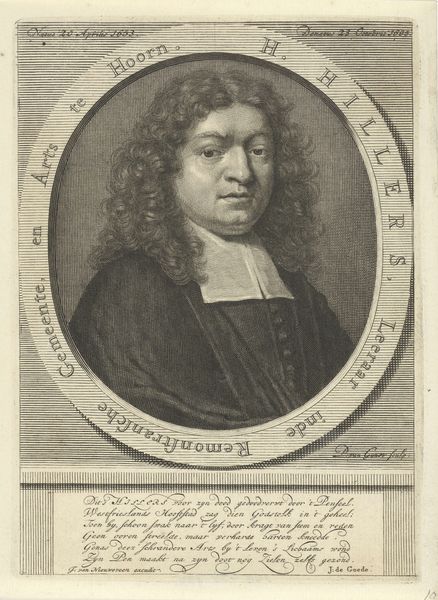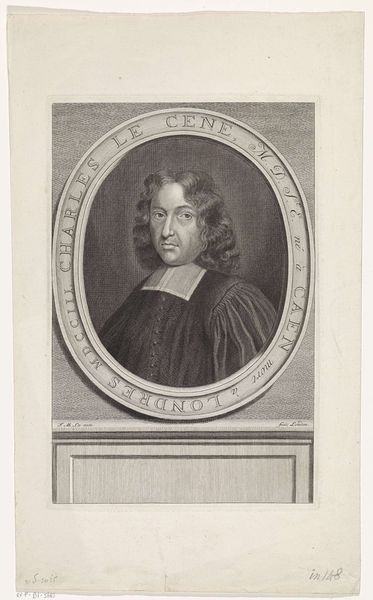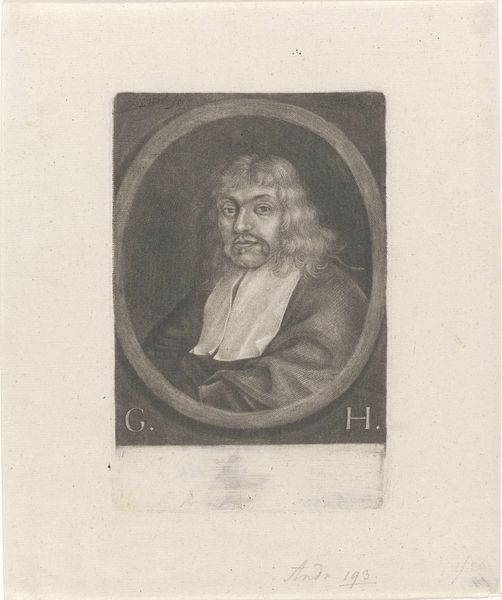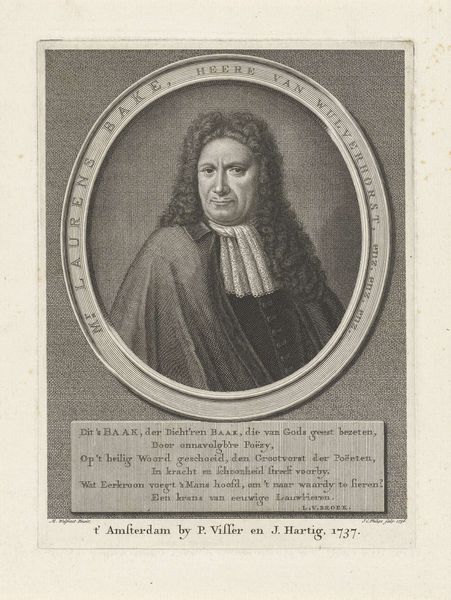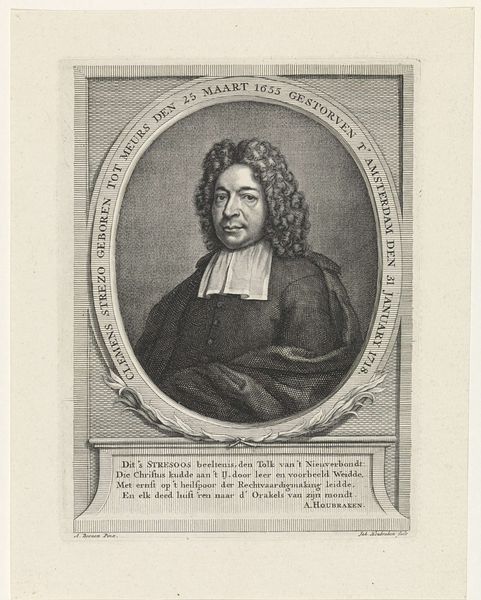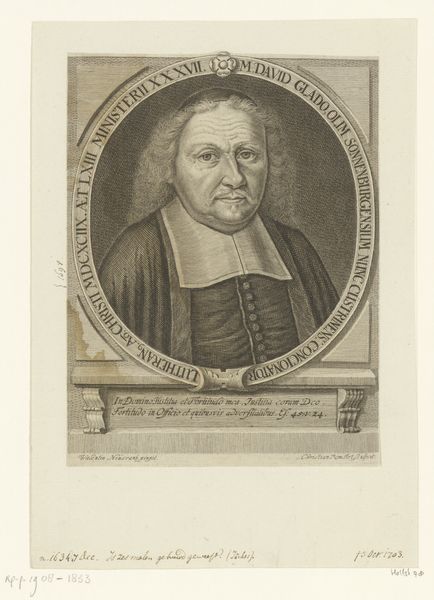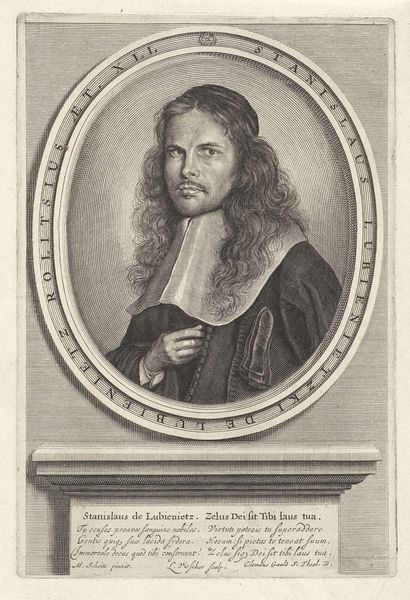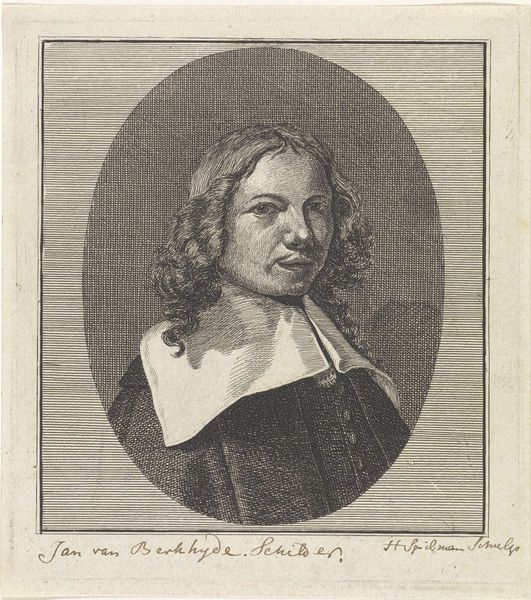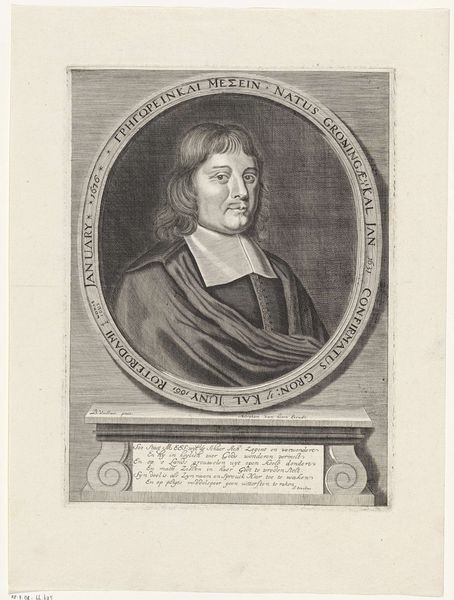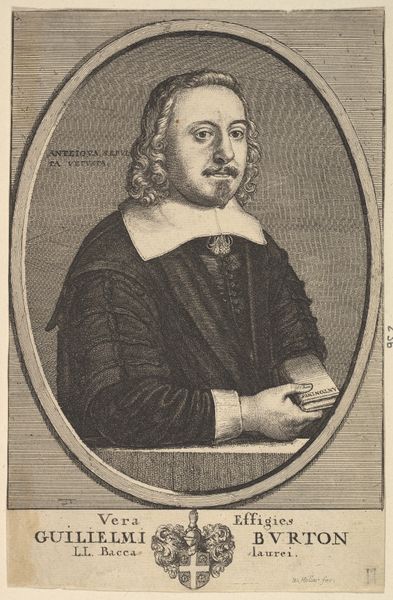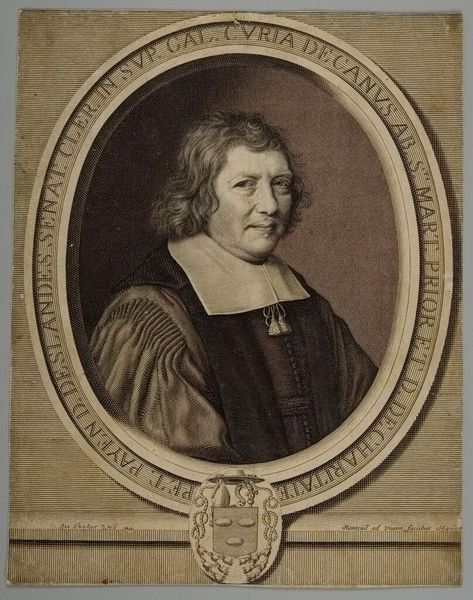
drawing, paper, pencil
#
portrait
#
drawing
#
dutch-golden-age
#
paper
#
pencil drawing
#
pencil
Dimensions: height 103 mm, width 87 mm
Copyright: Rijks Museum: Open Domain
Editor: This is "Portret van Johannes van der Meer de Oude," a pencil drawing on paper from 1690. Something about the subject's gaze feels incredibly direct, almost challenging. What jumps out at you? Curator: That directness is compelling, isn’t it? Note how the oval frame almost acts as a symbolic window. What do windows traditionally represent? Editor: Opportunity, maybe perspective… a way of seeing. Curator: Precisely. The portrait, then, isn’t just about capturing likeness; it’s about framing a specific vision of the man within the broader scope of Harlem society. Observe the inscription. "Pictor Harlemensis." It emphasizes his identity within that community. Why that insistence on location and trade, do you think? Editor: I guess that's about establishing not just who he is but *where* he belongs in society and what role he occupies, literally picturing the social order? Curator: Exactly. The symbols – the style of dress indicating profession and status, the controlled expression conveying dignity, all become legible markers for his cultural memory within the community. Think about the symbolic weight of clothing and portraiture at the time... it would broadcast a person's social status and values. Editor: I hadn't considered the way even seemingly simple details could carry so much meaning about someone's place in their community and how that gets passed down through a portrait like this. It is a lot about cultural memory and visual identity. Curator: Indeed. It's about how the individual wants to be seen, yes, but also how society expects them to be. A fascinating dance of identity!
Comments
No comments
Be the first to comment and join the conversation on the ultimate creative platform.


